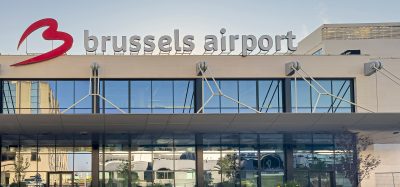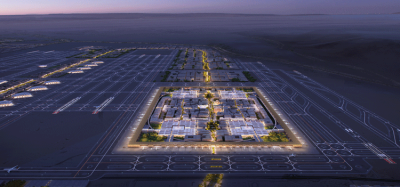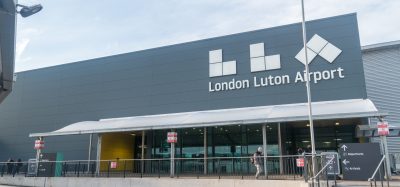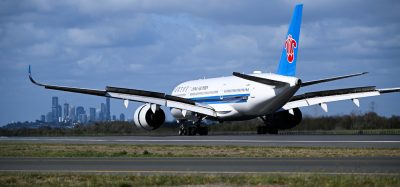Building a greenfield airport when the COVID-19 crisis strikes: Determining recovery strategies
- Like
- Digg
- Del
- Tumblr
- VKontakte
- Buffer
- Love This
- Odnoklassniki
- Meneame
- Blogger
- Amazon
- Yahoo Mail
- Gmail
- AOL
- Newsvine
- HackerNews
- Evernote
- MySpace
- Mail.ru
- Viadeo
- Line
- Comments
- Yummly
- SMS
- Viber
- Telegram
- Subscribe
- Skype
- Facebook Messenger
- Kakao
- LiveJournal
- Yammer
- Edgar
- Fintel
- Mix
- Instapaper
- Copy Link
Posted: 10 May 2021 | Dr Ayça Kolukısa | No comments yet
For International Airport Review, Chief Strategy Officer of the New International Airport of Heraklion, Dr. Ayça Kolukısa, shares the vision for Greece’s new airport and details how the pandemic has influenced strategic decision making to ensure the success and sustainability of Heraklion well into the future.
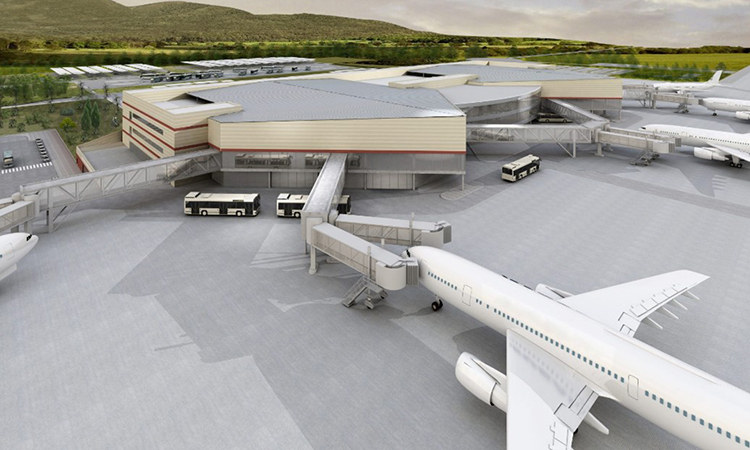

A simulation of the terminal building of the new international airport of Heraklion.
The new international airport of Heraklion, Crete, is scheduled to commence operations by 2025, replacing the existing Heraklion Airport Nikos Kazantzakis (HER). It will be the second largest airport in Greece, expected to handle up to 18 million passengers during the concession period.
The new international airport of Heraklion, Crete, is scheduled to commence operations by 2025, replacing the existing Heraklion Airport Nikos Kazantzakis”
The project was tendered in 2016 by the Greek State. The concessionaires for the following 35 years are the Ariadne Airport Group (a consortium of TERNA Greece (60 per cent) and GMR Airports (40 per cent)), which holds 54 per cent of the shares, and the Greek State, which holds 46 per cent of the shares of the airport company. As part of the concession provisions, the Greek State will finance part of the construction, as well as provide a portion of the aeronautical fees (Airport Development Fees) of the existing airport to the concessionaire.
Between 2016 and 2019, the existing Heraklion Airport achieved a significant traffic increase from six million to 8.2 million, exceeding the most optimistic traffic forecast scenarios and indicating the value of Crete as a touristic destination, with a network of more than 100 airlines in 160 destinations in Europe, Asia and Africa. Such an achievement definitely increases expectations for the new airport and drives the government’s and shareholders’ determination in delivering the most efficient and modern airport in Greece.
The impact of COVID-19
Just as construction had begun, the pandemic struck. Current HER traffic dropped to 2.4 million, impacting the proceeds from the anticipated airport development fee and, in the meantime, casting uncertainty over the airport industry’s future.
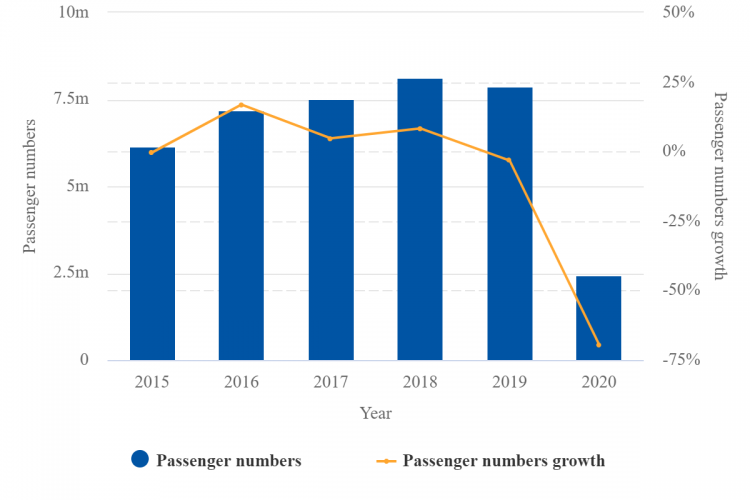

Figure 1: Traffic realisation in Heraklion between 2015 and 2020.
Without a doubt, the pandemic has to be primarily confronted from the humanitarian perspective. At the same time, institutes and corporations have to study the impact and share and invest in mitigation measures to support the market and safeguard their viability. In the case of the new Heraklion Airport Company (HAC), this inevitably became the epicentre of our strategic decision making and prioritised certain key drivers in the process of business orientation and master planning. Indicatively, the following key factors had to be thoroughly re-evaluated:
- Seasonality and other periods of low traffic
- Operational expenses and manpower
- Ensuring revenue streams
- Profiling of travellers’ new behaviours
- Service excellence
- Market competitiveness
- Public health and corporate responsibility
- Stakeholder engagement.
Key achievements to adopt to occurring needs
For the new Heraklion Airport, the investment had to consider high summer traffic peaks, with considerably less winter traffic. Consequently, the flexible use of facilities was prioritised”
Until lately, the airport’s design focused on large, impressive constructions. For the new Heraklion Airport, the investment had to consider high summer traffic peaks, with considerably less winter traffic. Consequently, the flexible use of facilities was prioritised, e.g. swing gate hold rooms and centralised and common infrastructure, which will permit an at least 20 per cent smaller terminal building to handle the same amount of intra- and extra-Schengen passengers. This has a significant impact on reducing our operational expenses.
The flexibility foreseen permits the terminal areas to be further isolated by up to 40 per cent as necessary during low traffic periods to reduce operational expenses. This optimisation can be further supported by the use of automated touchpoints to reduce payroll and dependencies on third parties services.
Enhancing the passenger experience
To enhance the passenger experience, the total distance to be walked from curbside to the gates through the touchpoints will be kept relatively short”
Heraklion Airport has set service excellence as a key challenge. In that aspect, the level of service exceeds optimum as per Airport Development Reference Manual (ADRM) provisions in selected areas of passenger flows. The gate hold rooms are designed as open space halls merged with commercial plazas, intending to provide the physical space necessary for social distancing.
To enhance the passenger experience, the total distance to be walked from curbside to the gates through the touchpoints will be kept relatively short (less than 500m in total), including appropriate walkways through the commercial areas. A dedicated panoramic food court and lounges level is planned in the departures area, while an open air terrace area (roof garden) will provide a magnificent view of the apron and breath-taking landscapes of Crete. This area will benefit from natural ventilation and reduce congestion in the gate hold rooms during peak hours.
Celebrating Crete
Visiting Crete is an experience that starts and ends with the passenger’s arrival at the new Heraklion Airport, and we intend to keep our passengers’ attention focused on Crete’s uniqueness”
Visiting Crete is an experience that starts and ends with the passenger’s arrival at the new Heraklion Airport, and we intend to keep our passengers’ attention focused on Crete’s uniqueness. To that end, an impressive and large exhibition area demonstrating the history of Crete and the Minoan civilisation will be located in the departures mezzanine, flooded by natural sunlight entering the glass ceiling during the day or covered by the moonlight and stars at night. In the same mezzanine, ‘early arrival’ departing passengers will have the chance to enjoy food and beverages with a panoramic view of the departures areas and the mentioned sky view until their check-in time comes. Prayer rooms, mother and baby facilities and children’s playrooms shall provide the necessary comfort and respect for passenger needs. Considering the high interest in VIP and General Aviation flights on the island of Crete, specific provisions have been included in the design to offer segmented services to these passengers.
Looking to the future
The eight-floor terminal of approximately 90,000m2 and 19 boarding gates, will have the capability to expand further as necessary by means of additional piers. A total of 10 passenger boarding bridges (PBBs) will be in place by 2025, expandable to up to 16 piers in the future. A more than 13,000m2 commercial area is also included in the terminal footprint.
The new airport will be the first in Greece to provide airlines with MARS stands with two passenger boarding bridges to accommodate International Civil Aviation Organization (ICAO) Code D/E aircrafts. Additionally, considering the aforementioned mitigation measures, it will be the first airport to operate a three independent ramp system between the terminal and the PBBs to achieve passenger flow segregation before entering or leaving the terminal building. It will also be the first airport in Greece with a check-in islands design, instead of linear. All of these aspects will significantly increase the flexibility to use gate halls, stands and touchpoints in periods of necessary physical distancing.
The new airport will not only be a landmark for passengers, but also for airlines and employees. Safety and minimisation of turnaround times were prioritised”
The new airport will not only be a landmark for passengers, but also for airlines and employees. Safety and minimisation of turnaround times were prioritised. More than 40 aircraft parking stands will be provided, the majority of them designed for power in, power out operations, equipped with a fuel hydrant system in each stand and short taxiing distances to the primary runway. In addition, the airport will be equipped with state-of-the-art precision approach radars and necessary navigational aid systems.
Furthermore, the revised master planning considered a segregation of areas so that travellers, handlers, authorities’ personnel, office tenants, merchandise and other suppliers or facility management do not share infrastructure, flows or floor facilities within the terminal. Whilst the integrated Airport Operation Control Centre (AOCC) and the crisis room are prioritised to enhance operational safety and efficiency, additional supporting areas will be introduced for emergency auxiliary services, such as health monitoring and quarantine offices, as well as early baggage/ off airport check-in handling services.
Sustainability
Corporate social responsibility and sustainability have dictated additional strategies as part of the new Heraklion Airport’s scheduled investments, such as reducing energy consumption and our carbon footprint. Water recycling, reforestation, terminal building LEED certification, solar energy, charging stations and e-mobility and segregated waste management are some of the key implementations in progress.
Corporate social responsibility and sustainability have dictated additional strategies as part of the new Heraklion Airport’s scheduled investments”
While we are proud of these key drivers and achievements, we consider any strategic decision making for a greenfield airport to originate from engagement with local people, the region, stakeholders and an awareness of local life. As such, the airport company prioritised regional urban and spatial development planning as the key decisive procedure to support, enhance and safeguard sustainability, commercialisation, continuity, competitiveness, respect for the region and peaceful incorporation of the airport community within it. Indicatively, considerations related to connectivity, mobility, transportation and public utilities are foreseen in a way that raises the standard of living and quality of life in the area, as well as support the exploitation of the airport landside zone, which has been redesigned under the new circumstances to create a solid area of more than 700,000m2.
The pandemic is definitely a period to reconsider market principles. Perhaps, in the future, another unforeseen factor may equally affect the industry, not even necessarily a health incident, as is the current case. Acknowledging the volatility of the industry and developing strategies to ensure adaptation to new conditions will enhance sustainability and continuation of services. Through this short presentation of the new airport, we intend to depict indicative examples that can support this goal, while at the same time ensure service excellence for our travellers and employees.
The new international airport of Heraklion is getting ready to welcome its guests in 2025, to experience travel, as well as explore the spectacular Island of Crete and the uniqueness of Greece from the very first moment of arrival until the very last moment of departure!
Dr Ayça Kolukısa is the Chief Strategy Officer of the New International Airport of Heraklion, the second largest airport in Greece. She has 20 years of aviation experience, having worked in managerial positions in the three major airports of Turkey, including Ankara Esenboğa Airport (ESB), Istanbul Sabiha Gökçen Airport (ISG) and the New Istanbul Airport (IST). Several projects that she has supervised have received governmental and aviation related awards.
Dr Kolukısa holds University degrees both in Civil Aviation Management and in Public Relations and completed her PhD in Civil Engineering in the area of aviation. Her fields of expertise include airport management; financial and operational modelling; marketing and commercialisation; business development; capacity planning; passenger experience and service excellence; and risk management.
Related topics
Aircraft, Airport construction and design, Airport crisis management, Airside operations, Capacity, COVID-19, Emissions, Passenger experience and seamless travel, Passenger volumes, Safety, Sustainability, Sustainable development, Terminal operations, Tourism
Related airports
Related organisations
GMR Airports, Heraklion Airport Company (HAC), International Civil Aviation Organization (ICAO), TERNA Greece




